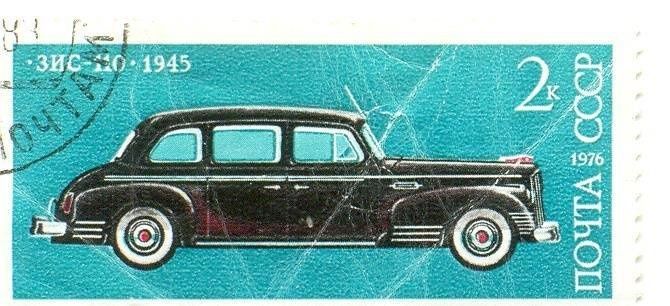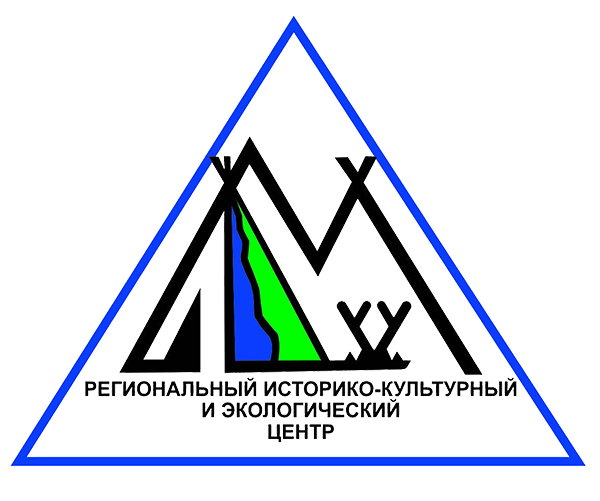Рубрика: Предметы и Факты (+ translation) (от 27.04.2023)

Конец апреля знаменателем не только скорым приходом солнечной погоды, но и несколькими интересными историческими датами. В 1553 году, по указу царя Ивана Грозного, была основана первая в России типография. Катализатором этого решения послужило огромное количество ошибок в рукописных книгах для богослужения, которые допускали малограмотные переписчики. Бесчисленные ошибки приводили к разночтениям в текстах, ересям и спорам. Царь, с поддержкой митрополита Макария, решил положить этому конец через книгопечатание. Иван Федоров стал издателем первой точно датированной печатной книги. «Апостол» был первой книгой, напечатанной в Русском государстве Федоровым и его ближайшим сподвижником, Петром Мстиславцем, в 1564 году.
В 1611 году, во время пожара в Москве, Печатный двор сгорел дотла, и мастерские были временно перемещены в палаты Кремля в период Смутного времени. К 1620 году на месте старого здания было построено новое двухэтажное строение, в которое из Дворцовой палаты Кремля были перевезены семь типографских станков. Однако вскоре пожар вновь уничтожил все строения Печатного двора. В 1642-1645 годах русские зодчие Трефил Шарутин и Иван Неверов построили двухэтажный каменный дом по указу царя Михаила Фёдоровича. Красивые символы царской власти, такие как изображения льва и единорога, а также двуглавый орел на башне здания, были добавлены позже. В этом каменном доме расположились Правильня и Печатный приказ, а также библиотека, в которой хранились все книги, издававшиеся исключительно по царскому указу. Эта типография называлась Государевым печатным двором и была передана духовенству в 1653 году.
Патриарх Никон стал распорядителем типографии и получил право самостоятельно издавать указы о выпуске новых книг и их продаже. В 1703 году типография стала издавать первую российскую газету «Ведомости», по указу Петра I. С 1564 по 1711 годы было напечатано около 700 изданий, включая Евангелия, Псалтырь, Часовник, полемические сочинения, переводы и учебную литературу. В 1722 году типографию передали Святейшему Синоду, и до 1917 года тут была Московская синодальная типография, одна из самых больших в России. Набор шрифтов, использованный в этой типографии, был уникальным и включал коптский и сирийский шрифты.
Сегодня мы подготовили для вас марку времен СССР. Данный предмет был передан в фонды в 2006 году от Т.М. Леншиной и датируется 1976 годом. Интересный факт, но в период с 1922 по 1938 год был разрешен официальный обмен марками с коллекционерами из-за границы при условии, что был уплачен специальный почтовый сбор и соответствующая регистрация была произведена в книге учета в пунктах приема обменной корреспонденции. Однако после того, как в 1938 году обменная корреспонденция была запрещена, эти записи стали полезным руководством для сотрудников НКВД в поиске «врагов народа». Американский историк Джонатан Грант указал, что репрессии, применяемые к советским филателистам, как правило, начинались средними партийными функционерами. Они рассматривали коллекционирование почтовых марок как чрезвычайную деятельность, а приобретение и обмен марками считались признаком частного предпринимательства и запрещенных операций с иностранной валютой.
#Типография #Марки
The end of April is marked not only by the imminent arrival of sunny weather, but also by several interesting historical dates. In 1553, by decree of Tsar Ivan the Terrible, the first printing house in Russia was founded. The catalyst for this decision was a huge number of errors in handwritten books for worship, which made illiterate scribes. Countless mistakes led to discrepancies in the texts, heresies, and disputes. The tsar, with the support of Metropolitan Macarius, decided to put an end to this through book printing. Ivan Fyodorov became the publisher of the first precisely dated printed book. «The Apostle» was the first book printed in the Russian state by Fyodorov and his closest associate, Peter Mstislavets, in 1564.
In 1611, during a fire in Moscow, the Printing Yard burned to the ground, and the workshops were temporarily moved to the chambers of the Kremlin during the Time of Troubles. By 1620 a new two-storeyed building was constructed in place of the old one and seven printing machines were moved from the Palace palace of the Kremlin to it. However, soon a fire destroyed all the buildings of the printing yard again. In 1642-1645 Russian architects Trefil Sharutin and Ivan Neverov built a two-story stone house by order of Tsar Mikhail Fyodorovich. Beautiful symbols of royal power, such as images of a lion and a unicorn, as well as a two-headed eagle on the tower of the building, were added later. This stone house housed the Procuratorate and the Printing Office, as well as the library, which contained all the books published exclusively by royal decree. This printing house was called the Tsar's Printing House and was given to the clergy in 1653.
Patriarch Nikon became the manager of the printing house and obtained the right to independently issue decrees on the issue of new books and their sale. In 1703 the printing house began to publish the first Russian newspaper "Vedomosti", by decree of Peter the Great. From 1564 to 1711 about 700 editions including the Gospels, the Psalter, the Book of Hours, polemical works, translations and educational literature were printed. In 1722 the printing house was given to the Holy Synod, and until 1917 it housed the Moscow Synodal Printing House, one of the largest in Russia. The set of fonts used in this printing house was unique and included Coptic and Syriac fonts.
Today we have prepared for you a USSR-era stamp. This item was given to the funds in 2006 from T.M. Lenshina and is dated 1976. An interesting fact is that in the period from 1922 to 1938 official exchange of stamps with collectors from abroad was permitted on condition that a special postage was paid and a corresponding registration was made in the ledger at the points of acceptance of the exchange correspondence. However, after exchange correspondence was banned in 1938, these records became a useful guide for NKVD officers in their search for "enemies of the people. The American historian Jonathan Grant pointed out that the repression applied to Soviet philatelists was usually initiated by average party functionaries. They regarded stamp collecting as an extraordinary activity, and the purchase and exchange of stamps was considered a sign of private enterprise and prohibited foreign exchange transactions.
В 1611 году, во время пожара в Москве, Печатный двор сгорел дотла, и мастерские были временно перемещены в палаты Кремля в период Смутного времени. К 1620 году на месте старого здания было построено новое двухэтажное строение, в которое из Дворцовой палаты Кремля были перевезены семь типографских станков. Однако вскоре пожар вновь уничтожил все строения Печатного двора. В 1642-1645 годах русские зодчие Трефил Шарутин и Иван Неверов построили двухэтажный каменный дом по указу царя Михаила Фёдоровича. Красивые символы царской власти, такие как изображения льва и единорога, а также двуглавый орел на башне здания, были добавлены позже. В этом каменном доме расположились Правильня и Печатный приказ, а также библиотека, в которой хранились все книги, издававшиеся исключительно по царскому указу. Эта типография называлась Государевым печатным двором и была передана духовенству в 1653 году.
Патриарх Никон стал распорядителем типографии и получил право самостоятельно издавать указы о выпуске новых книг и их продаже. В 1703 году типография стала издавать первую российскую газету «Ведомости», по указу Петра I. С 1564 по 1711 годы было напечатано около 700 изданий, включая Евангелия, Псалтырь, Часовник, полемические сочинения, переводы и учебную литературу. В 1722 году типографию передали Святейшему Синоду, и до 1917 года тут была Московская синодальная типография, одна из самых больших в России. Набор шрифтов, использованный в этой типографии, был уникальным и включал коптский и сирийский шрифты.
Сегодня мы подготовили для вас марку времен СССР. Данный предмет был передан в фонды в 2006 году от Т.М. Леншиной и датируется 1976 годом. Интересный факт, но в период с 1922 по 1938 год был разрешен официальный обмен марками с коллекционерами из-за границы при условии, что был уплачен специальный почтовый сбор и соответствующая регистрация была произведена в книге учета в пунктах приема обменной корреспонденции. Однако после того, как в 1938 году обменная корреспонденция была запрещена, эти записи стали полезным руководством для сотрудников НКВД в поиске «врагов народа». Американский историк Джонатан Грант указал, что репрессии, применяемые к советским филателистам, как правило, начинались средними партийными функционерами. Они рассматривали коллекционирование почтовых марок как чрезвычайную деятельность, а приобретение и обмен марками считались признаком частного предпринимательства и запрещенных операций с иностранной валютой.
#Типография #Марки
The end of April is marked not only by the imminent arrival of sunny weather, but also by several interesting historical dates. In 1553, by decree of Tsar Ivan the Terrible, the first printing house in Russia was founded. The catalyst for this decision was a huge number of errors in handwritten books for worship, which made illiterate scribes. Countless mistakes led to discrepancies in the texts, heresies, and disputes. The tsar, with the support of Metropolitan Macarius, decided to put an end to this through book printing. Ivan Fyodorov became the publisher of the first precisely dated printed book. «The Apostle» was the first book printed in the Russian state by Fyodorov and his closest associate, Peter Mstislavets, in 1564.
In 1611, during a fire in Moscow, the Printing Yard burned to the ground, and the workshops were temporarily moved to the chambers of the Kremlin during the Time of Troubles. By 1620 a new two-storeyed building was constructed in place of the old one and seven printing machines were moved from the Palace palace of the Kremlin to it. However, soon a fire destroyed all the buildings of the printing yard again. In 1642-1645 Russian architects Trefil Sharutin and Ivan Neverov built a two-story stone house by order of Tsar Mikhail Fyodorovich. Beautiful symbols of royal power, such as images of a lion and a unicorn, as well as a two-headed eagle on the tower of the building, were added later. This stone house housed the Procuratorate and the Printing Office, as well as the library, which contained all the books published exclusively by royal decree. This printing house was called the Tsar's Printing House and was given to the clergy in 1653.
Patriarch Nikon became the manager of the printing house and obtained the right to independently issue decrees on the issue of new books and their sale. In 1703 the printing house began to publish the first Russian newspaper "Vedomosti", by decree of Peter the Great. From 1564 to 1711 about 700 editions including the Gospels, the Psalter, the Book of Hours, polemical works, translations and educational literature were printed. In 1722 the printing house was given to the Holy Synod, and until 1917 it housed the Moscow Synodal Printing House, one of the largest in Russia. The set of fonts used in this printing house was unique and included Coptic and Syriac fonts.
Today we have prepared for you a USSR-era stamp. This item was given to the funds in 2006 from T.M. Lenshina and is dated 1976. An interesting fact is that in the period from 1922 to 1938 official exchange of stamps with collectors from abroad was permitted on condition that a special postage was paid and a corresponding registration was made in the ledger at the points of acceptance of the exchange correspondence. However, after exchange correspondence was banned in 1938, these records became a useful guide for NKVD officers in their search for "enemies of the people. The American historian Jonathan Grant pointed out that the repression applied to Soviet philatelists was usually initiated by average party functionaries. They regarded stamp collecting as an extraordinary activity, and the purchase and exchange of stamps was considered a sign of private enterprise and prohibited foreign exchange transactions.
